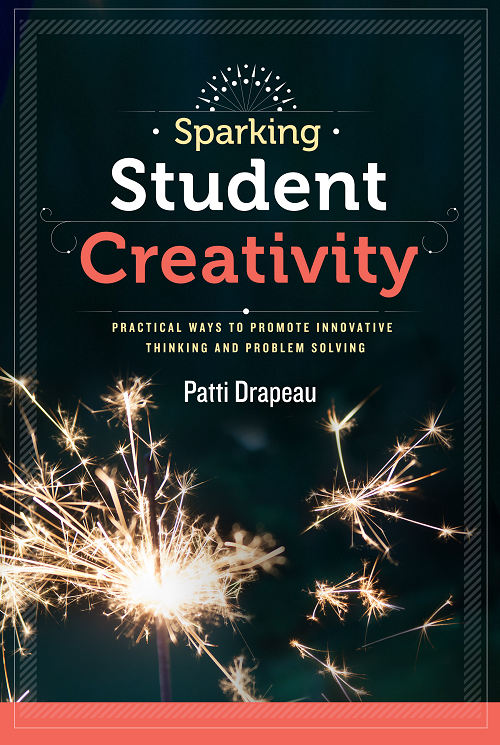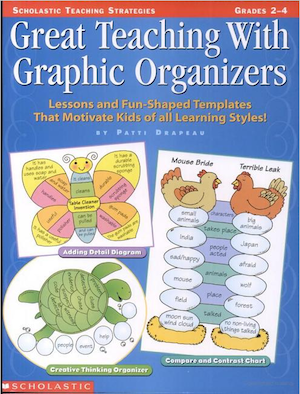Inspiring Student Empowerment
Moving Beyond Engagement Refining Differentiation
Student engagement continues to be  an important goal for teachers, but it shouldn’t end there. There is no one-size-fits-all approach to teaching anymore. School districts that have begun to shift their focus from engaging students to empowering them, and from differentiation to personalized learning, have seen a rise in test scores, motivation, attention, and self-confidence.
an important goal for teachers, but it shouldn’t end there. There is no one-size-fits-all approach to teaching anymore. School districts that have begun to shift their focus from engaging students to empowering them, and from differentiation to personalized learning, have seen a rise in test scores, motivation, attention, and self-confidence.
When students have voice and choice, they gain control over their learning and their actions and feel empowered to work harder and achieve more. Through sample lessons, strategies, and applications, educators will learn how to shift from engagement to empowerment, from differentiation to personalized learning, and practical ways to make these strategies work in the classroom. The book includes surveys, instructional design planners, formulas to create tiered questions, sample whole units, rubrics, peer feedback forms, self-reflection forms, flexible group tracker forms and examples of how to shift from teacher to teacher/student to student driven learning.
Engagement and Empowerment
Educators will find:
- A comprehensive guide to engaged learning
- A practical approach to encourage empowerment
- Research-based best practices to promote empowerment
Differentiation and Personalized Learning
Educators will find:
- A comprehensive guide to refining differentiation practices
- A comprehensive guide to personalized learning
- Practical ways to use voice and choice, instructional design, and classroom climate to promote student empowerment
- An entire chapter dedicated to the social and emotional learning side of personalized learning
Digital content includes reproducible forms and a PDF presentation for professional development.
Sparking Student Creativity
Practical Ways to Promote Innovative Thinking and Problem Solving
The purpose of this book  is to help teachers understand the concept of creativity, recognize creativity, and realize the benefits of fostering creativity in their classrooms. The book focuses on the relationship between creativity and the standards and points out how teachers can teach creatively while addressing the standards and the content. The book outlines an analysis of this process as well as delineates a variety of instructional tools, strategies and techniques that can be used to infuse creativity into lessons.
is to help teachers understand the concept of creativity, recognize creativity, and realize the benefits of fostering creativity in their classrooms. The book focuses on the relationship between creativity and the standards and points out how teachers can teach creatively while addressing the standards and the content. The book outlines an analysis of this process as well as delineates a variety of instructional tools, strategies and techniques that can be used to infuse creativity into lessons.
In this reader friendly approach to creativity, the book describes how to take creative thinking skills and strategies and use them to engage and motivate students. Many teachers complain they don’t have time to do creative activities because they need to cover the content addressed in the standards. The author describes how teachers actually save time by redesigning lessons to make learning active and meaningful.
While the book does address research, the main emphasis of the book is on practical applications of creativity and innovation. A process for designing creative tasks, a list of creative techniques and a description on how to assess creative lessons are described and illustrated with concrete examples of classroom lessons across content and across grade levels. The book compares typical and creative thinking lessons, shows how to take a standard and address it creativity, provides a process for the innovative and creative problem solving processes and includes a variety of organizational structures and formats to use when designing and managing creative tasks.
Many teachers never learned about creativity in their undergraduate or even graduate educational coursework. For those who are willing to embrace creativity in the classroom, teachers will welcome this practical resource.
The main topics in this book include:
- Defining creativity and defining characteristics of creative learners
- Identifying four elements of creativity fluency, flexibility, elaboration and originality
- Matching standards (the what) with creativity (the how)
- Introducing a creativity road map that includes creative thinking words and phrases, creative strategies, innovation and creative problem solving and creative products
- Comparing five different ways to assess creative thinking in order to provide students with timely and specific feedback
- Providing 40 grab and go strategies teachers can use right away
Differentiating with Graphic Organizers
Tools to Foster Critical and Creative Thinking
 The main focus of this book is to encourage teachers to foster critical and creative thinking and depth of reasoning through the use of cognitive graphic organizers in the differentiated classroom. The overriding reason for teachers to use these organizers is to improve student achievement.
The main focus of this book is to encourage teachers to foster critical and creative thinking and depth of reasoning through the use of cognitive graphic organizers in the differentiated classroom. The overriding reason for teachers to use these organizers is to improve student achievement.
In Part I, I provide examples of six different ways to differentiate using graphic organizers. The graphic organizers in Part II are designed to promote critical thinking associated with the five verbs: assume, infer, analyze, prioritize, and judge. Those in Part III are designed to encourage the creative thinking skills: brainstorm, connect, create, and elaborate. Rating scales are included for each graphic organizer for teaches who want to use them as a guide to give student feedback, to assess student responses or, to provide students with a self assessment tool.
I conclude the book with a description of ways to use graphic organizers with curriculum models, a textbook series, or teacher designed units of study. I describe how to create an activity grid which can be used as a good management tool to help teachers plan out their graphic organizer activities. I also explain how rating scales can be turned into rubrics.
There are some unique features about this book which include:
- Addressing the relationship among differentiation, thinking skills, and graphic organizers
- Utilizing graphic organizers that focus on critical or creative thinking
- Using shared procedural language to target each verb in order to help students create clear, concise, logical answers
- Examining the graphic organizer to see why the student’s answer might be based on faulty reasoning
- Using rating scales or rubrics to give students’ feedback on the graphic organizer
- Creating activity grids to manage which graphic organizer to use and when
Differentiated Instruction
Making it Work
 How can you meet the needs of all your students amid the realities of day-to-day teaching? The answer is differentiated instruction. Veteran teacher Patti Drapeau demonstrates how to make it work in real classrooms with real students from a variety of backgrounds who exhibit a variety of learning styles. Ensuring that all these students successfully meet the standards can be a challenge, but this book will show you how.
How can you meet the needs of all your students amid the realities of day-to-day teaching? The answer is differentiated instruction. Veteran teacher Patti Drapeau demonstrates how to make it work in real classrooms with real students from a variety of backgrounds who exhibit a variety of learning styles. Ensuring that all these students successfully meet the standards can be a challenge, but this book will show you how.
Recognizing that it’s impractical to individualize instruction, Patti shares ideas for differentiating your curriculum into three levels. Within each level, questions and tasks can be presented from simple to more complex and can incorporate a variety of learning styles, so that all students interact with the content at appropriate levels.
Patti grounds her teaching in research, drawing on the work of Lev Vygotsky, Eric Jensen, Robert Sternberg, and Howard Gardner. From this research base and her own experience, she offers practical strategies for implementing differentiated instruction, including:
- Tiering lessons to create three levels of challenge
- Designing differentiated learning centers to accomodate different learning styles
- varying the pace of learning
This book includes complete language arts, science, and social studies sample units with model sets of tiered task cards. High level thinking graphic organizers and key words and phrases that promote complexity and depth are also used to challenge all students. This book is a clear cut guide to differentiated instruction.
Great Teaching with Graphic Organizers
 Ready to take graphic organizers far beyond the usual Venn diagram? Are you eager to discover new ways teach thinking skills and motivate every kind of learner? In this unique book, educator Patti Drapeau presents the irresistible organizers that she and her colleagues developed to build these eight thinking processes:
Ready to take graphic organizers far beyond the usual Venn diagram? Are you eager to discover new ways teach thinking skills and motivate every kind of learner? In this unique book, educator Patti Drapeau presents the irresistible organizers that she and her colleagues developed to build these eight thinking processes:
- Compare and Contrast
- Cause and Effect
- Forecasting
- Drawing Conclusions
- Creative Thinking
- Elaboration
- Decision Making
- Planning
Along with 20 full-page organizers, Patti shares model lessons and lots of students’ work so you can see for yourself the power these graphics have to help children comprehend what they read, organize thier ideas, and become more effective thinkers and writers. In page after page, Patti shows how she and students at the Mast Landing and Morse schools in Freeport, Maine, have fun using the organizers to compare and contrast characters, add vivid details to writing, brainstorm ways to save endangered species, make decisions about a current events controversy, and much more.Whether you’re trying graphic organizers for the first time or looking to revitalize your use of them, this resource is sure to give you fresh ideas and insights about how to include them for whole-class, small-group, and individual learning.
Great Teaching with Graphic Organizers: Revised and Expanded 2nd Edition
This version includes the following changes from the original book: expanded grade focus grades K-6; updated research; list of graphic organizer websites; two additional graphic organizer chapters; an additional chapter with complete integrated graphic organizers into seven units across content and; a set of critical and creative thinking bookmarks.
